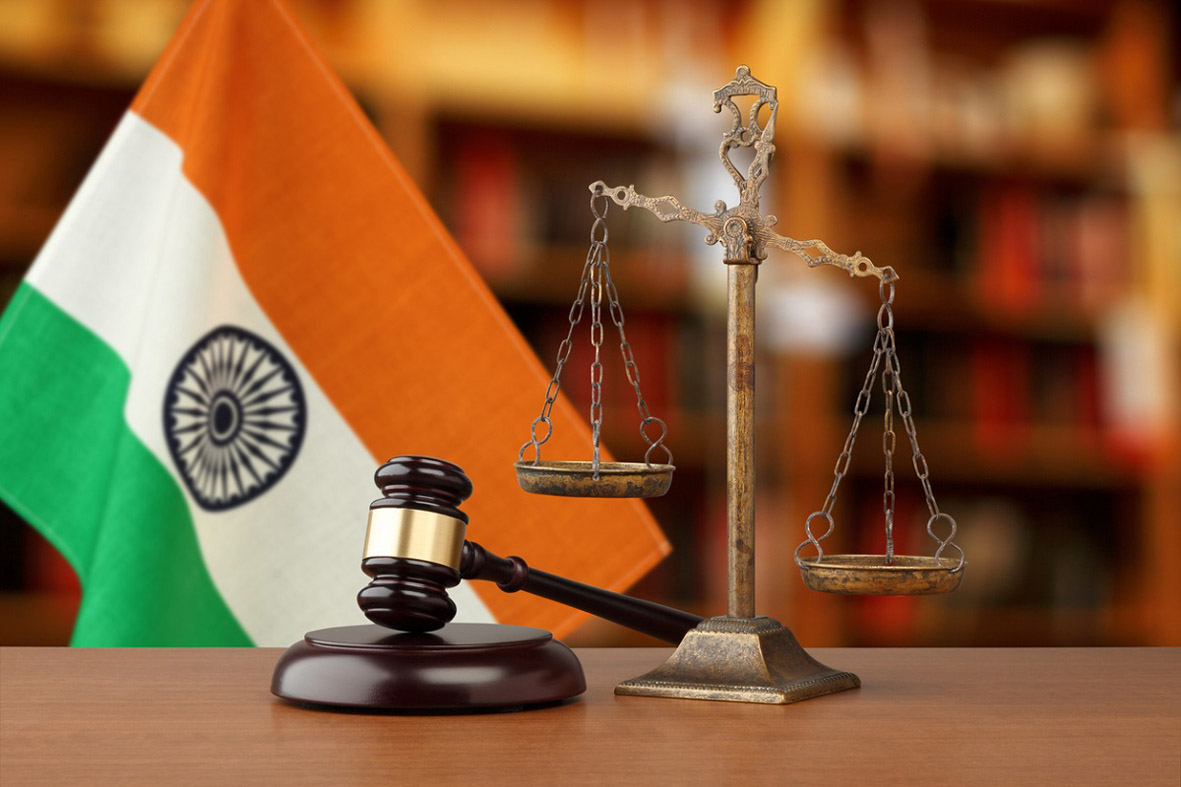Chetan Prabhakar
Today, we are marking and celebrating 75 years of Independence. On this Independence Day, let us examine as to where are we from the perspective of the administration and deliverance of justice. Since independence, the administration of justice may have evolved enormously but it has still not reached the place it deserved to reach. We have encountered many developments in the Indian legal system, however, with ever increase in the legal cases, the Judiciary in India still lacks the pace with which it should have moved and adopted the changes required for walking with time.
The Judicial system in India is still slow. Administration and deliverance of justice is loaded with delays and as a result, there is huge backlog of cases. As of today, the total number of pending cases in the Courts of India are around 4.52 crores. NITI Aayog strategy paper 2018 (New India @75) noted that it would take 324 years just to clear the present backlog at the current rate of disposal.
The time immemorial prime reason for delay in justice and pendency of cases, among others, remains over burdened judiciary because the numbers of Judges are less than the vacancies available. There are around 4 vacant positions in the Supreme Court of India, 400 vacancies in 25 High Courts and 5000 vacancies in the district and sub-ordinate Courts across India.
In 2002, the Supreme Court of India in All India Judges’ Association v. Union of India observed that “Apart from the steps which may be necessary for increasing the efficiency of the judicial officers, we are of the opinion that time has now come for protecting one of the pillars of the Constitution, namely, the judicial system, by directing increase, in the first instance, in the Judge strength from the existing ratio of 10.5 or 13 per 10 lakh people to 50 Judges per 10 lakh people. ”Even after 20 years of passing this Judgement, we have not reached this benchmark. Who is responsible for this?
The other area of concern is timeliness or time frames for concluding cases. Countries like the US have limited mandatory time frames. However, India does not have general statutory time limits comparable to the US Speedy Trial Act. While the Civil Procedure Code, and the Criminal Procedure Code, have time frames for completing certain stages of the case, these statutes generally do not prescribe time limits within which the overall case should be completed, or each step in the trial should be concluded.
The 20th Law Commission under the chairmanship of Justice A.P. Shah noted that ”Denial of ‘timely justice’ amounts to denial of ‘justice’ itself. Two are integral to each other. Timely disposal of cases is essential for maintaining the rule of law and providing access to justice which is a guaranteed fundamental right. However, the judicial system is unable to deliver timely justice because of huge backlog of cases for which the current judge strength is completely inadequate. Further, in addition to the already backlogged cases, the system is not being able to keep pace with the new cases being instituted, and is not being able to dispose of a comparable number of cases. The already severe problem of backlogs is, therefore, getting exacerbated by the day, leading to a dilution of the Constitutional guarantee of access to timely justice and erosion of the rule of law.”
It is also vital to note there that after the issuance of 20th Law Commission report in July 2014, two terms of 3 years of 21st and 22ndLaw Commission have already completed; however, no reports have been issued by the Law Commission of India. This is the way administration and deliverance of justice is handled in India.
The 20thLaw Commission and the NITI Aayog in 2018 Strategy paper (New Indian@75) gave recommendations for the way forward for improving administration of Justice and few of them, easy to implement, are given below:
* An Act like US Speedy Trial Actmay be enacted in India which should provide for mandatory time frames for concluding different types of cases.
* A massive influx of judicial resources in order to dispose of the backlog and keep pace with current filings and to take urgent measures for increasing judge strength.
* In order to meet the need for a large number of appropriately trained Subordinate Court Judges, the age of retirement of Subordinate judges be raised to 62 years.
* Facilitate the availability and usage of videoconferencing facilities to assist in speedy access to justice and to minimize logistical issues. At present, even the available video conferencing facilities are not utilized optimally.
* Special morning and evening Courts be set up for dealing with Traffic/Police Challan cases in the state.
* Taking measures for the timely disposal of cases at all levels of the judicial system, including by monitoring and increasing judge strength and to encourage Alternative Dispute Resolution Methods.
* Apart from increasing judge strength, many other measures have to be undertaken for reducing delays, including the application of good judicial management practices such as putting into place timeliness and performance benchmarks.
* An all-India judicial services examination on a ranking basis can be considered to maintain high standards in the judiciary. The selection process may be entrusted to the Union Public Service Commission (UPSC) for a cadre of lower judiciary judges (first induction level), Indian Legal Service.
* Continuing training may be introduced to ensure development of skills, ethics, knowledge and awareness of international best practices and multi-faceted training faculty for judicial academies including reputed lawyers, successful NGOs and others, for holistic exposure may be considered.
(The author is an Advocate of Jammu & Kashmir High Court)
Trending Now
E-Paper


